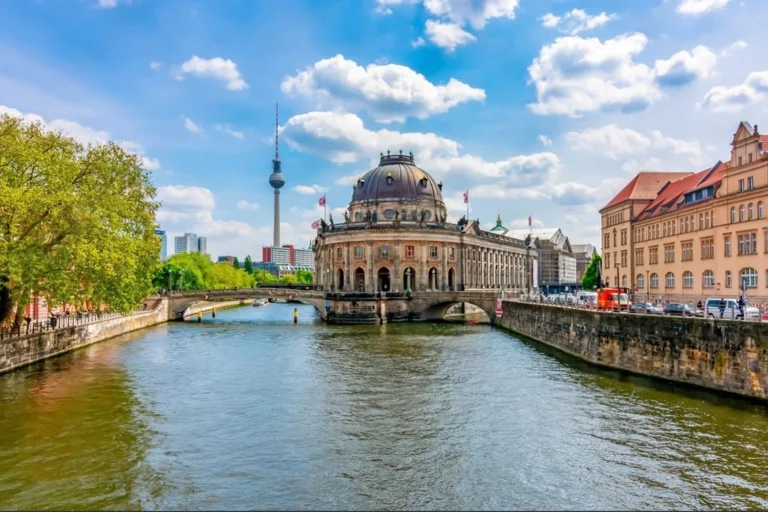Statue of Liberty: 30 Fascinating Truths Behind the Icon
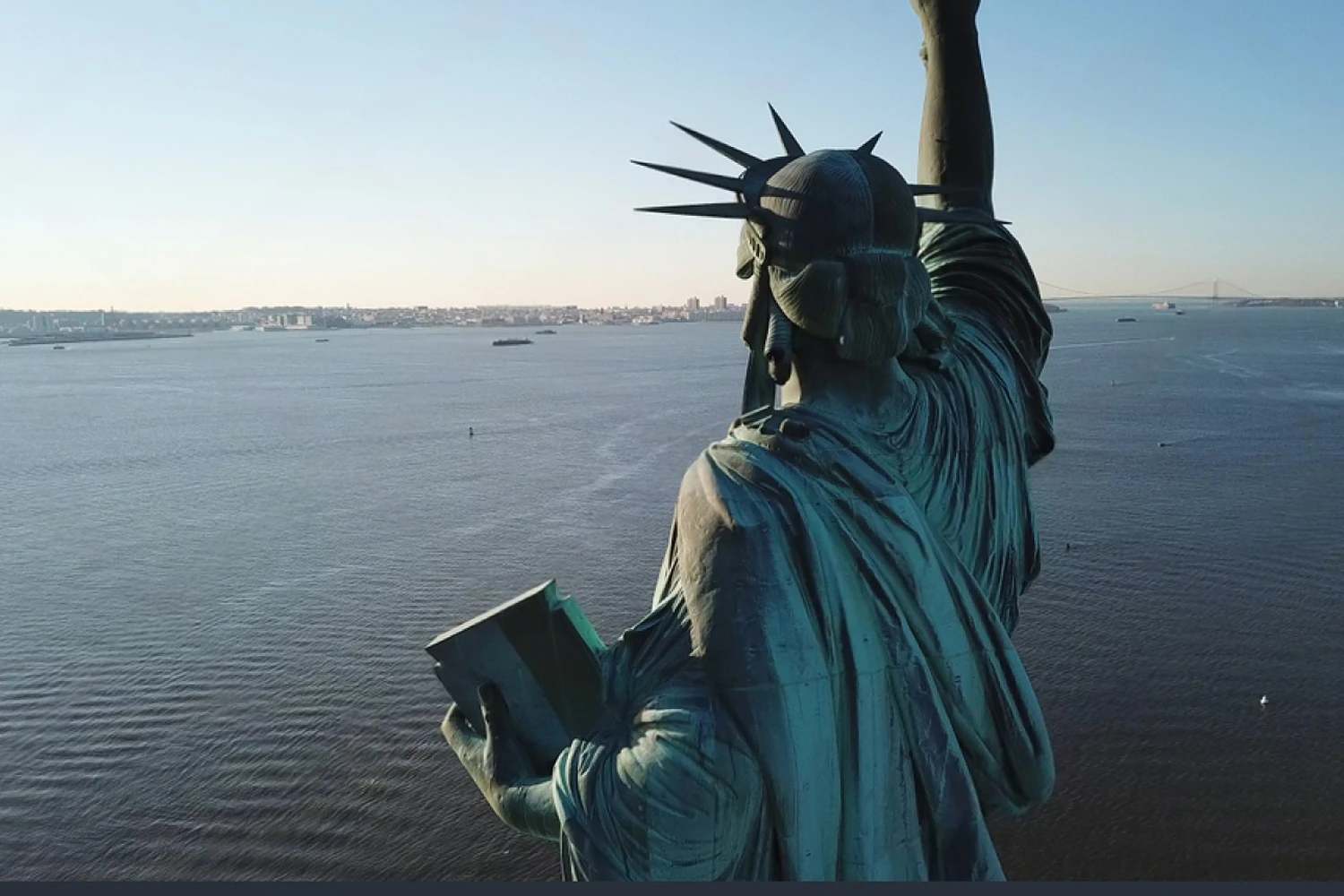
The ferry hums beneath my feet, gulls call overhead, coffee warms my hands, and sunlight flickers across the rippling water. I step ashore at the Statue of Liberty, ready to look past the familiar outline. Exploring it feels like lifting the corner of a well loved quilt to find careful stitches you never noticed. In the soft shuffle of visitors, the low thrum of engines, and the smell of the river and warm wood, I start to notice the overlooked moments that reveal its quieter spirit beyond the postcard.
Lady Liberty, a colossal DIY in 214 crates
I still grin at the thought that she didn’t arrive as a miracle, but as 214 crates over 300 copper pieces waiting on a windy shore. Imagine the clang of metal, the smell of tar and salt, gulls arguing overhead while the river flashed like a blade in sunlight. It makes her feel wonderfully human to me, less distant than the postcards suggest.
Four months it took to bolt and rivet her together, a giant jigsaw rising panel by panel until a hand lifted, a face found the sky. I like picturing the workers wiping their brows, listening to the city’s old heartbeat of hammers and steam, knowing they were assembling a welcome you could see from miles away. She started the color of a new penny, and time did the rest.
Maybe that’s why she carries a quiet tenderness, especially out in New York Harbor: she was made the way so many lives are made piece by piece, with patience and stubborn hope. I remember thinking how fitting it is that a symbol of arrival started as parts in boxes, a patchwork quilt that chose to stand tall and glow. In a place that asks you to become yourself, she’s proof that being put together can be its own kind of grace.

When Lady Liberty glowed copper, not green
I used to assume she’d always been that calm sea green. Then I learned she arrived in 1886 bright copper orange, shining like a new penny, and suddenly the whole statue felt different to me full of change and patience.
On a breezy day you can almost picture that copper catching the sun, gulls looping and the harbor smelling faintly of salt. Over about thirty years, air and rain slowly turned her surface green through oxidation, and that patina now protects her metal from corrosion.
I love that twist: the color we think of as age is actually a kind of safeguard. In New York Harbor, her calm green feels honest enduring, practical, and somehow more welcoming, a reminder that time can soften a first shine and still make it strong.
A face with many whispers, one unwavering gaze
There’s something comforting about not knowing exactly whose face she wears. Some swear it’s Bartholdi’s mother, others his brother, and a few whisper about a French woman named Sarah Salmon. Yet her copper green calm always lands the same a quiet authority that steadies you without fuss.
Out in New York Harbor, with salt on the breeze and gulls sketching loose loops in the sky, I remember thinking how right it feels that her features are a mystery. In a place built from many arrivals, a shared face makes sense stitched together from borrowed memories, and still wholly herself. When the light glides along her brow and the ferries hum below, she doesn’t blink; she just keeps being that lighthouse of composure, reminding you that certainty isn’t required for something to feel true.
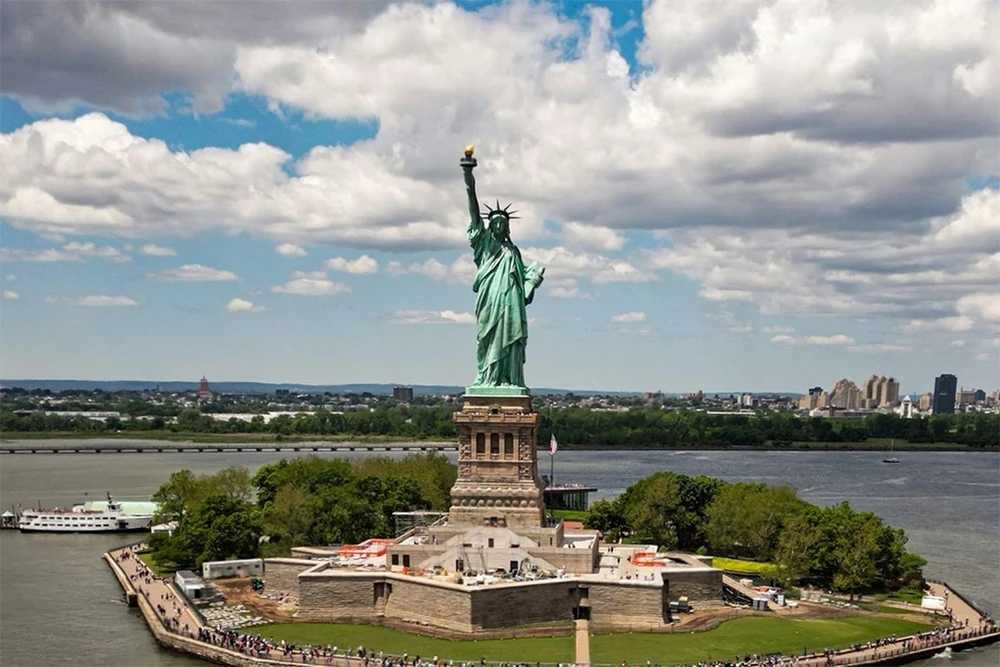
Lady Liberty Almost Shone Over a Desert Canal
Funny how the symbols we trust almost belonged somewhere else. The sculptor imagined her not in familiar copper, but as an Egyptian peasant woman – a “Light of Asia” – lifting a lantern beside a canal carved through the desert. The offer was grand and costly; the project fell through. I remember learning that and feeling the air shift, as if history were a river that quietly changed course.
Maybe that’s why she feels so tenderly right where she is. In New York Harbor, with gulls skimming the wind and salt tugging at your sleeves, her green face catches the afternoon and you sense a story of second chances. She was almost someone else, and yet the glow stayed true – a lantern searching for its shore – which somehow makes her welcome broader, more forgiving, the kind of light that understands the long road of arrival.
Hidden chains at Liberty’s feet speak a deeper freedom
Everyone stares at the torch. Gulls wheel over the harbor, the wind tastes like salt and diesel, and that copper green figure glows with the kind of calm you lean on. But what moved me most is the thing we almost never see: at her feet, only visible from above, lie broken chains and shackles. Most people miss them, and still they whisper – a secret footnote louder than the headlines – that freedom wasn’t just a pose for a postcard.
I remember learning about those chains in New York Harbor and feeling something shift. They say the message leaps past 19th century politics into every ordinary day: freedom from any tyranny, the loud ones and the quiet ones, the ones outside us and the ones we carry around. Maybe that’s why they’re tucked out of sight; some truths do their work offstage. The links are snapped, the step is forward, and the meaning rolls through you like quiet thunder under her robe.
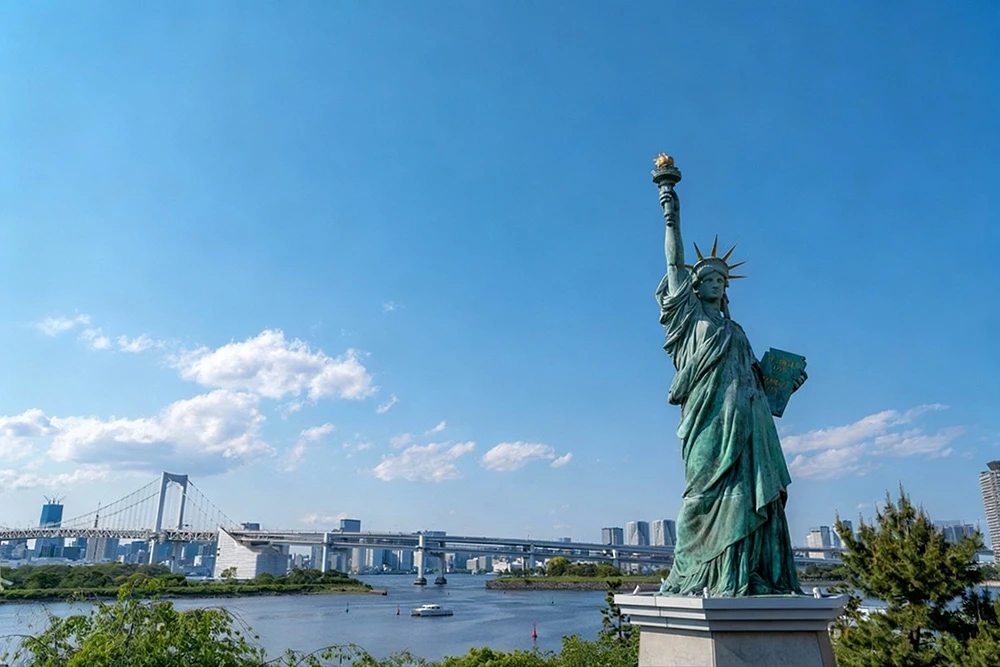
Paper thin copper, a hidden iron spine beneath her
What gets me every time is how delicate she really is. That great green presence wears a skin so thin you could almost imagine light passing through it just 3/32 of an inch, about two pennies stacked. Out on Liberty Island in New York Harbor, with the wind salted and restless, it feels almost impossible that something so slight can look so certain.
The secret, of course, is inside: iron rods and beams holding steady, a quiet architecture dreamed up by Gustave Eiffel of Eiffel Tower fame. I love that strength tucked beneath grace, like a spine that never brags. It makes her calm in storms and patient with centuries, a kind of endurance that doesn’t need to raise its voice.
I remember standing there thinking how it mirrors the way people arrive soft on the outside after a long journey, carrying their real sturdiness within. There’s something tender in that truth: we’re not made strong by armor, but by the frameworks we build inside ourselves, and by the hopes we choose to carry.
Lady Liberty Takes 600 Lightning Hits a Year
I laughed softly when I first heard it she’s struck by lightning about 600 times a year. On those heavy afternoons when clouds roll in, you can almost hear the air hum; the smell of rain turns metallic, and the gulls go quiet. She stands there, copper darkening at the edges, torch a stubborn ember against the bruised sky.
She’s essentially her own lightning rod, calling the charge down and sending it safely through herself, weathering all that electric fury and still holding the torch high. Somehow it feels exactly right for New York Harbor: storms can snarl and crackle all they want, but the symbol at the gate keeps shining, patient and unafraid.
I remember a storm when the sky split white and my skin prickled, and I felt calm more than fear. If she can take hundreds of bolts and not flinch, maybe we can absorb a few shocks and stay bright. There’s comfort in knowing that even under the loudest sky, the torch keeps its small, steady promise.
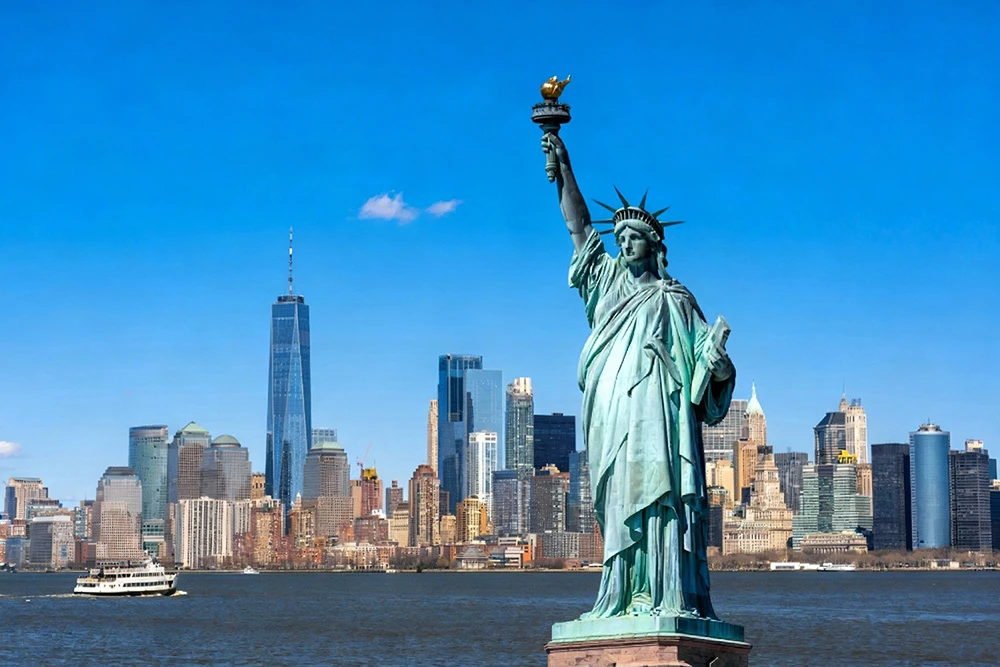
The Day Lady Liberty Nearly Found Her Voice
I still smile at the thought that we once considered giving a giant a voice. Thomas Edison actually proposed slipping a phonograph into the statue so she could speak. Part of me is curious imagine words rolling across the water but the rest is relieved; a booming greeting might have jolted people whose nerves were already thin from long crossings and new beginnings.
I remember the wind tasting like salt and pennies, gulls heckling, ropes clinking against masts, and it felt right that she kept her counsel. The Statue of Liberty says enough with her steady posture and patient torch, like a lighthouse that beckons without shouting. For those arriving with suitcases full of hope and fear, quiet is a kind of mercy; you hear your own heartbeat, and you choose your own first words.
Lady Liberty’s secret star beneath her feet
I used to picture her balanced on a plain block, nothing hiding below but stone and stories. Then I learned there’s a star under her Fort Wood, shaped in 1811 to guard the water and the pedestal was tucked right into that outline, like a time capsule under her sandals. It felt deliciously upside down: the world’s warmest greeting standing on a military relic almost no one associates with her anymore.
Out in New York Harbor, with the wind tasting of salt and the faint clang of rigging in the air, that detail suddenly makes sense. There’s tenderness in the way cannons gave way to open arms, in how a fortress became a foundation for hope. I remember thinking that this is so very New York: taking what once braced for danger and letting it hold up a promise instead, sturdy, quiet, and still doing its work.
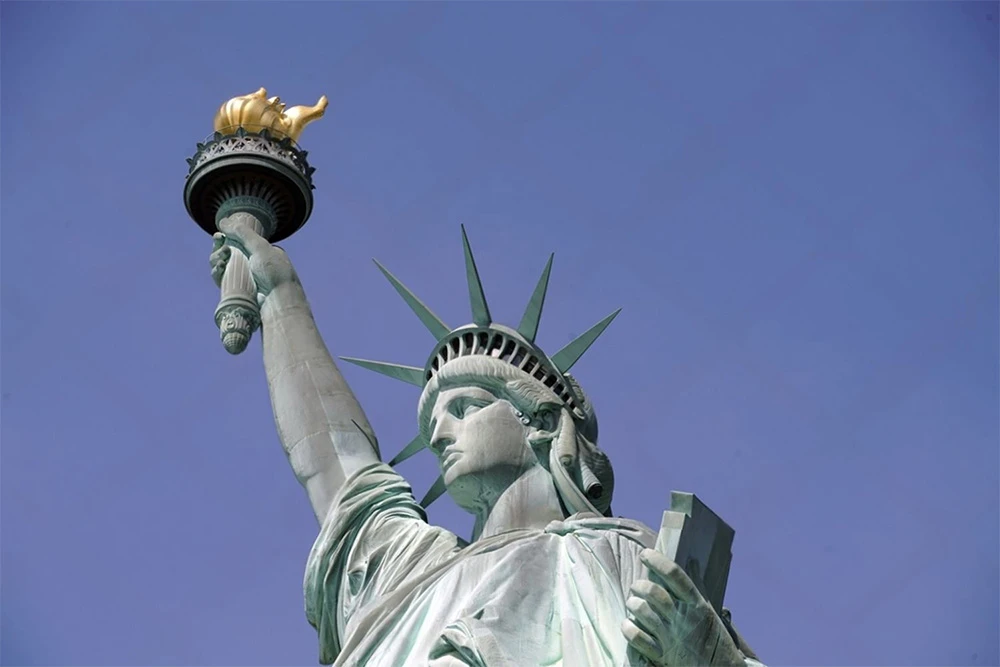
The torch you can see but never climb
I used to think the torch was off-limits because those spiral stairs were too tight. Then I learned the real reason: in 1916 a German sabotage blast on nearby Black Tom Island shook the harbor and damaged her arm and torch so deeply that the door has stayed shut ever since. Standing with the wind on my face and gulls stitching the sky, it felt oddly tender like finding out a friend still favors an old injury.
Out here in New York Harbor, you can rise to the crown, but the flame is forever out of reach. It isn’t about navigating safety rails anymore; it’s about memory, the way a city keeps faith with its past. I remember the copper catching a pale wash of sun and thinking how that century old night still decides how close we’re allowed to stand to wonder.
Maybe that’s what I love about places like this: ordinary rules with extraordinary roots. The air smells of diesel and salt, and you suddenly get it some doors stay closed not to shut us out, but to help us remember.
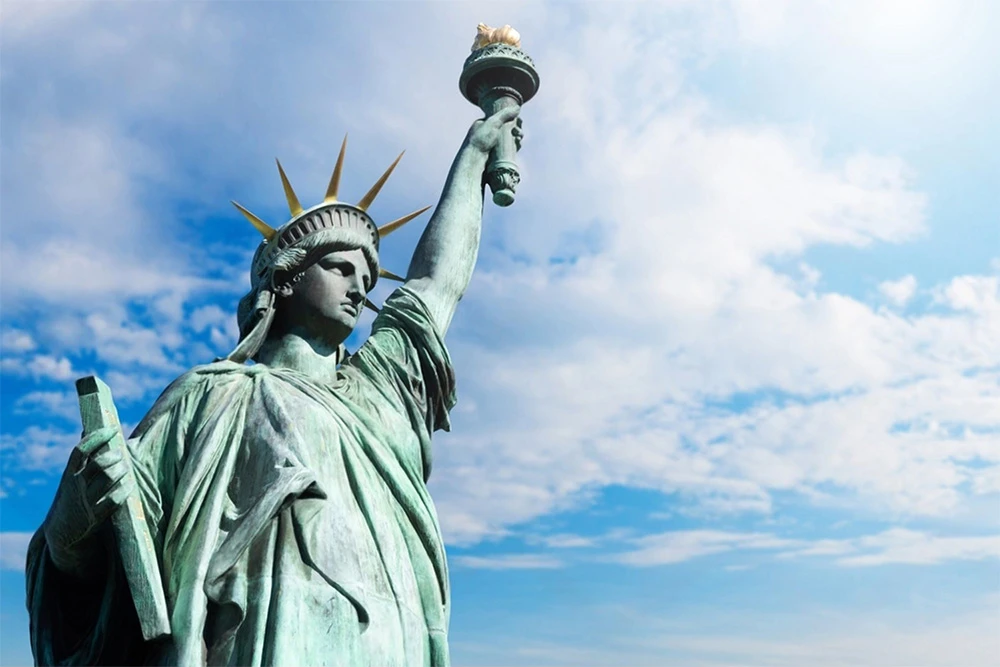
A new torch with the same old promise
Funny how rain turns everything to soft gray, and still that flame stays bright high above. Out in New York Harbor they replaced the original in the 1980s, giving her a 24-karat gold leaf torch that catches even the faintest light, so it glows when the clouds feel endless. It feels almost defiant in the drizzle like hope stubbornly refusing to dim.
I remember standing in the museum, the original torch resting behind glass, its skin a little scuffed, the copper dulled in a way that felt tender. It’s there for the sentimental among us, the ones who like to see the miles on a face; the new one shines while the old one keeps the stories. I left thinking that this is what the place teaches so gently: change can lift its bright head, and memory can nod along beside it.
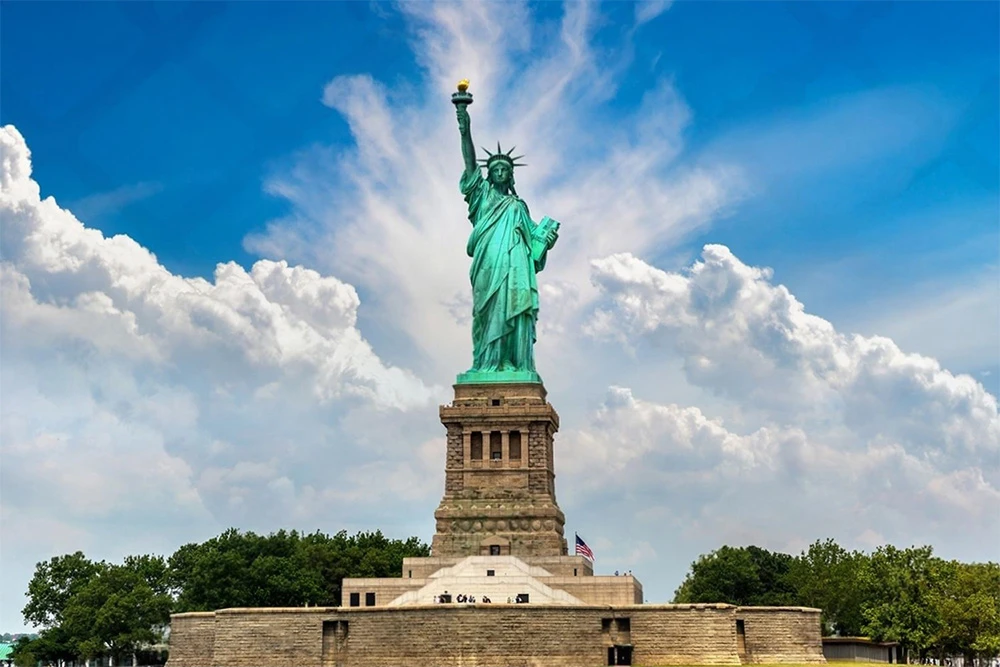
Liberty's book spells July Fourth in Roman numerals
I used to think the book was just a prop. Then the date catches your eye: “JULY IV MDCCLXXVI” – plain and solemn, and suddenly it feels close. With salt wind on your face and the distant clang of harbor life, that line of letters and numerals stops being trivia and starts feeling personal. It’s a small, steady detail that says, yes, there was a first breath.
Out in New York Harbor, it reads like the country’s birth certificate pressed into bronze. I remember thinking how Roman numerals once felt like a secret code, yet here they steady you, reminding you that all the noise of today grew from one clear starting point. The date doesn’t shout; it just keeps time – a quiet heartbeat cast in metal, easy to miss until you listen.
The lady who quietly breathes with the wind
I used to think she never moved. That copper face so calm, the robe washed the color of old pennies. But when the wind lifts, the Statue of Liberty actually flexes. They built her to give, not crack: the figure can sway roughly three inches, and the torch can drift about five when the gusts push hard.
Knowing that changed the way I felt beside her, out in New York Harbor. Instead of a frozen symbol, she felt like a moving sculpture pretending to be still, strong because she yields. The air tasted salty and loud with gulls, and there was this quiet comfort in it resilience as something you can’t see unless the weather tests it.
I remember the wind tugging at my sleeves and thinking how most of us survive the same way, a little give keeping the cracks away. It’s a small sway, barely the width of your palm, yet it says more than speeches: steadiness isn’t stiffness, it’s the courage to bend.

She stands on a quiet star, wearing impossible shoes
I still smile whenever I remember her shoe size: 879. Numbers that big make you laugh under your breath, especially with gulls stitching the sky and that calm sea glass green rising above you. Somehow the absurdity softens her grandeur; it’s easier to feel what she’s holding up when you can imagine the weight of those sandals.
Then you notice what she stands on: an eleven point star, the old fort’s geometry still underfoot like a compass rose pointing everywhere at once. In New York Harbor, that star doesn’t feel militant so much as welcoming angles opening outward, a steady, quiet kind of embrace. Even the base seems to say, there’s room, there’s safety, come as you are.
I love that in a city that often shouts, her clearest message is whispered through design the scale of a shoe, the patience of a star. It’s a reminder that ideals don’t always arrive with trumpets; sometimes they just stand still, certain and generous, and wait for us to notice.
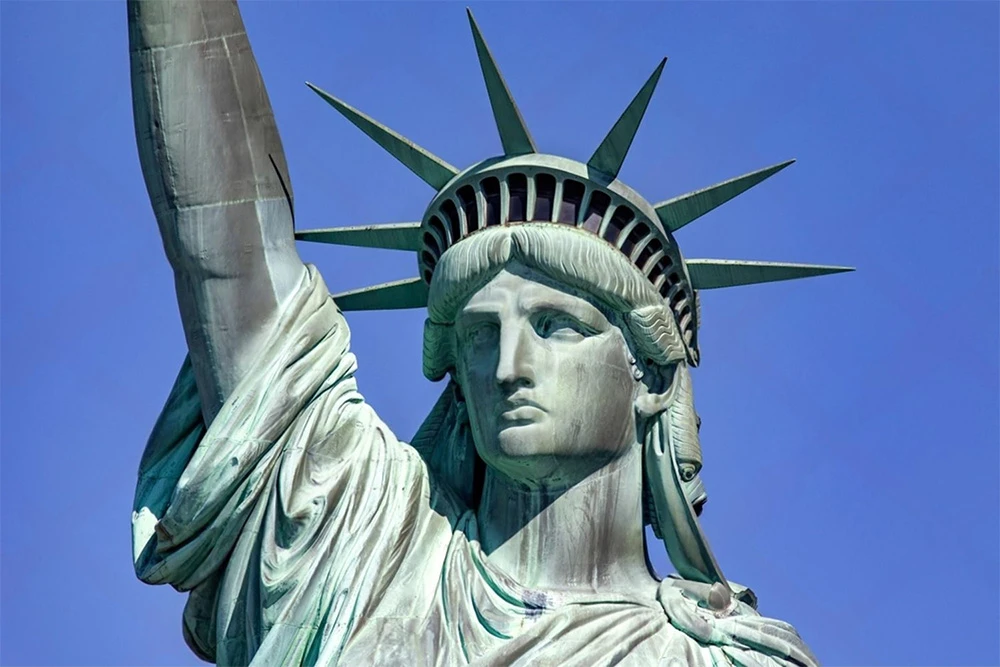
A face designed for the far horizon
The wind off the harbor tasted like salt and pennies, and I remember how her features are meant for distance. Up close, the numbers almost feel playful: her waist is 35 feet around, her nose four and a half feet long – choices the engineers exaggerated on purpose so she would look “right” from far across the water, not toy small against the sky.
That’s the charm of New York Harbor to me: it teaches you how distance edits things. She was built like a stage set for the sea, bold and legible from miles away, and somehow that makes her kindness feel bigger too, as if hope needs room to travel. I carried away a quiet lesson – sometimes we stretch a gesture so it reaches, so what we mean doesn’t get lost in the wind between us.
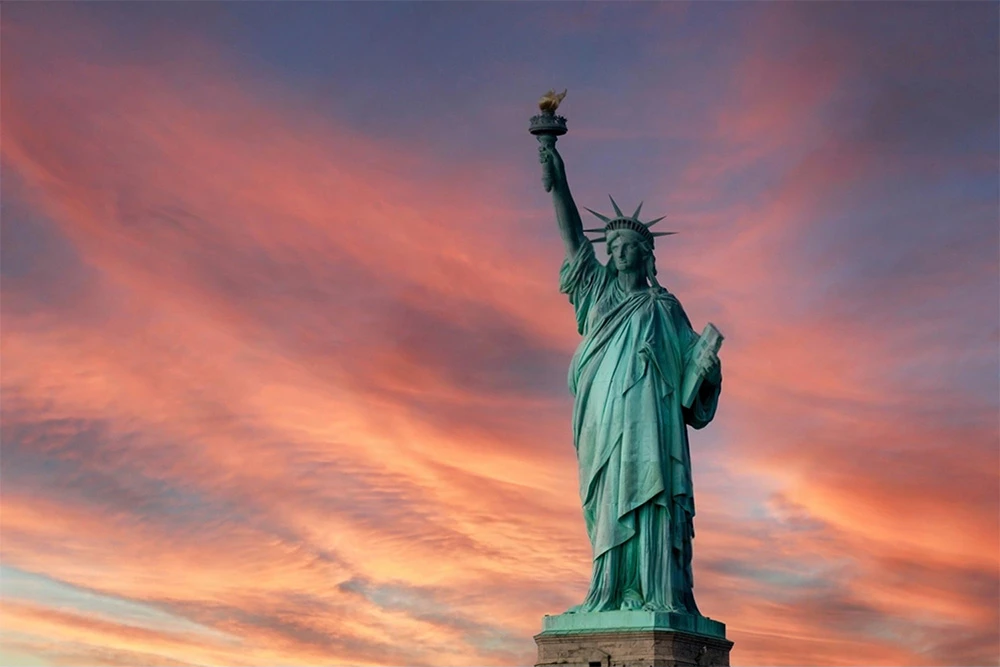
The night Liberty tried to guide ships home.
Funny thing: that shining torch once worked like a lighthouse. For a brief spell, they tucked a special lamp inside her flame to greet ships at sea. I like imagining the salt wind and the faint beam skimming the dark water, a lantern cupped in a giant hand.
The light, though, never burned bright enough for navigation, and after sixteen years the experiment slipped away as quietly as fog. Somehow that gentleness feels right; not every beacon has to be a tool. Some lights steady your spirit more than your compass.
Once, at dusk on New York Harbor, I watched her torch glow warm while gulls wheeled overhead and the bay moved below. It felt like a small, steady promise not to steer you exactly, but to tell you you’re welcome and you’ll find your way.
Lady Liberty was crowdfunded, long before the internet.
Isn’t it wild that she rose on nickels and dimes? When the money ran out for her pedestal, Joseph Pulitzer opened his newspaper to donations, and more than 120,000 everyday Americans answered with coins you could hide in a fist. He even printed their names, turning loose change into a chorus of small voices.
When the wind smells of salt and metal out in New York Harbor, I think about that. She isn’t just a gift; she’s proof that small kindnesses travel far. I remember feeling oddly proud, realizing this towering green figure stands because ordinary people believed their small could add up to something vast, like little stitches becoming a warm quilt.

Lady Liberty’s gaze is set slightly off center
I love when perfection slips a little. Lady Liberty, steady and solemn, wears her head just over two feet off center – a crown worn a touch askew that most of us never notice.
Out in New York Harbor, with gulls skimming the wind and the water smelling faintly of pennies, that small misalignment feels like a private detail. It made me grin the first time I heard it; somewhere, an engineer nodded, and a perfectionist sighed.
But that slight tilt says something kind. You can be a symbol of welcome and still lean a little, like a friend angling her head to listen better. Maybe that’s why she endures – reminders that our truest monuments carry humanity in their edges, not in their flawless lines.

Seven Spikes, Seven Seas, One Open Invitation
I remember squinting up into the glare and counting them, those sharp rays around her calm face, while gulls stitched the sky and the wind tasted like salt. Someone told me the seven spikes stand for the seven seas and seven continents, and suddenly the crown felt less like decoration and more like a compass pointing everywhere. It made me smile the idea that liberty wasn’t a local secret, but a message meant to travel farther than any ferry ever could.
Standing by the water in New York Harbor, I felt how generous that promise is, how it stretches past maps and languages. The statue seemed to hold out a hand over the waves, as if to say, “This light is for you, too,” whether you’re arriving or simply dreaming from far away. It’s a small detail in the metal, sure, but it carries a roomy kind of hope the kind that treats the world like one long shoreline.

Twenty Five Windows Glittering Brightly in Liberty’s Timeless Crown
I love that her crown isn’t solid at all it’s full of little panes that catch the day. Inside her head there are twenty five glass windows, once called “the celestial minerals of the earth,” which feels exactly right. When the sun tilts, light threads through them and scatters over the green copper like quiet confetti, and the whole top seems to breathe. Out in New York Harbor, with gulls stitching the air and the water flashing below, it’s easy to believe the sky is borrowing a seat inside her crown.
There’s something tender about a symbol of welcome that greets you with light instead of weight. Standing beneath that glow is like being inside a lantern, and I remember thinking how New York loves moments like this small, bright squares that turn ordinary time into a promise. Twenty five windows, a handful of brightness, and somehow the city’s vastness feels personal, as if hope could be measured in sparkles and still be enough.
Liberty’s flexible spine that taught Eiffel’s tower to sway
I love how the strongest icons are secretly built to move. Standing where the water smells of salt and metal and the gulls sound like laughter, I once learned that her insides aren’t rigid at all they flex with heat and lean with wind, a quiet choreography beneath the copper. It felt so human to me, that a symbol of resolve in New York Harbor survives not by bracing against the world, but by learning to breathe with it.
That steel skeleton, a spine made to breathe, turned out to be more than a clever trick; it became a lesson. The same engineer carried its wisdom forward just months later, stretching the idea into an iron lattice that would climb impossibly high. I still think about that how a beacon of welcome taught a future giant how to move, and how sometimes the bravest way to stand tall is to bend, just enough, with the weather of the day.
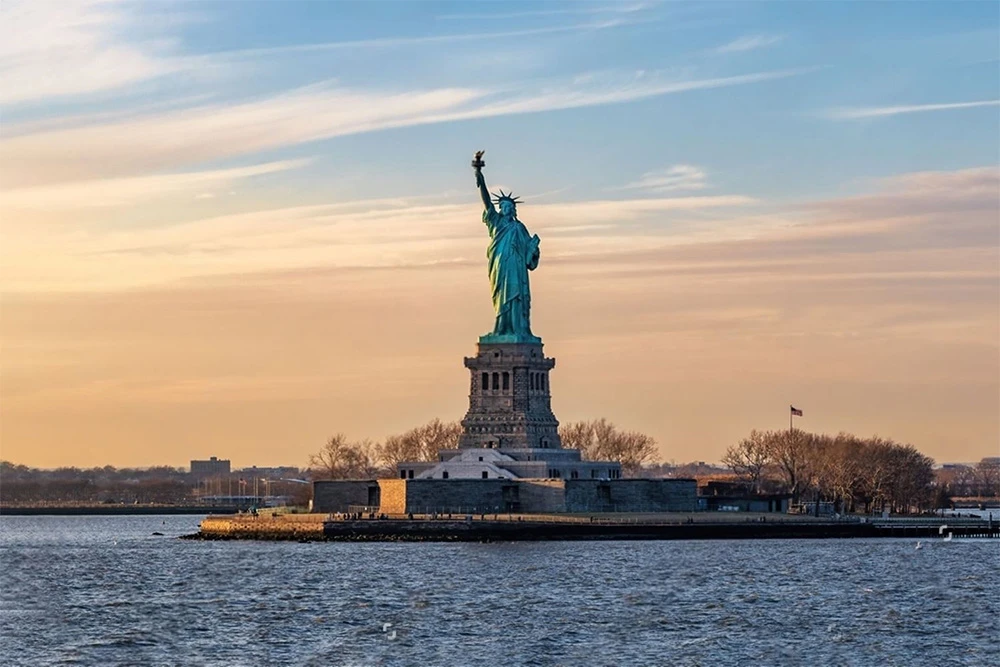
Her crown blinked Morse: a V for Victory
I love that on the night victory in Europe was announced, her crown didn’t just glow it pulsed dot dot dot dash, the letter V. Out in New York Harbor, after years of dimmed nights, that crisp little code cut through the dark like a lighthouse with a secret. It was patriotism with a brainy grin, light turned into language, nerves and relief flickering across the water.
When I first heard that, I smiled at how human it felt. Not a speech, not a parade just a quiet, clever message tapping out hope, a heartbeat in code. It’s the kind of detail that makes a place feel alive, reminding you that even monuments can join the chorus, whispering that joy doesn’t always shout; sometimes it blinks.
A quiet thank you beneath Liberty’s bronze skirts
I remember the hush inside the pedestal the cool, metallic smell, the faint echo of footsteps spiraling up. There’s a small, almost secret plaque there, a modest roll call for the hands that raised her: many of them Italian and Irish immigrants, paid far less than their labor deserved. It lands with a tender kind of irony the beacon of welcome towering above, while the people who built it lingered in the shadows. I could almost feel winter wind threading the scaffolds out in New York Harbor, lunch pails and chapped knuckles holding the whole promise steady.
What gets me is how the plaque feels like truth finally spoken, like a heartbeat hidden behind a ribcage. You taste the salt air and the paradox at once welcome held up by those who weren’t welcomed fairly and somehow the symbol grows more human. I walked away thinking freedom here isn’t just a statue; it’s the labor stitched into it, the quiet courage of newcomers whose names rarely make the skyline.
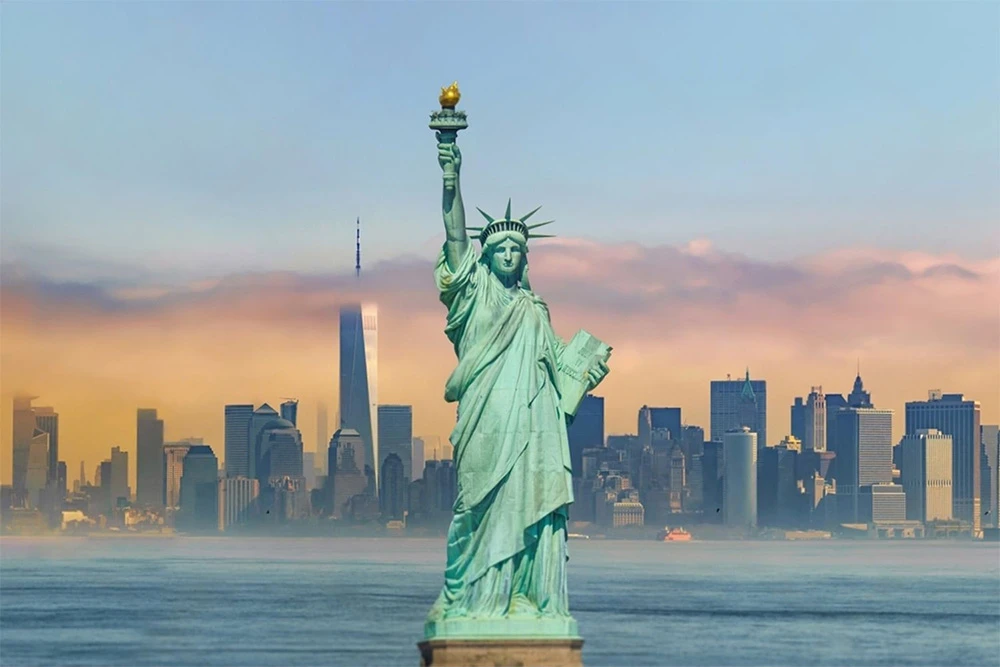
A secret balcony on Liberty’s quiet shoulder
I love how even legends keep small secrets. Tucked near her shoulder there’s a narrow balcony, the kind inspectors once used to check the copper seams and bolts, hidden enough that gulls probably claimed it first. I can almost hear the wind polishing the air up there, smell that faint mix of salt, metal, and sun warmed rivets.
But what gets me is the direction it faces: back toward France. Out in New York Harbor, that shy little lookout turns not to the skyline, but to the people who imagined her and sent her over the ocean – a quiet thank you built into her design. It feels like a heartbeat of gratitude, a silver thread pulled across the water that still connects us.
https://en.wikipedia.org/wiki/Statue_of_Liberty
Fog once made Lady Liberty a ghost to sailors
Funny how fog can trick your certainty. The horns would moan, salt clung to your tongue, and gulls sounded like they were wrapped in wool. Out there in New York Harbor, she’d swell and fade until her torch looked like a lantern adrift in milk, a dream that wouldn’t fully wake. Some crews swore she wasn’t real at all just a phantom raised by cold water and wishful eyes.
I love that about her: the way hope can feel unreal right before you reach it. Once, on a wet morning, she seemed more memory than monument, and I thought of captains navigating by faith as much as charts. It’s almost like the city is testing you arrive with doubt, and it greets you with a whisper; hold steady a little longer, and the whisper becomes a voice that you can’t mistake for anything but welcome.
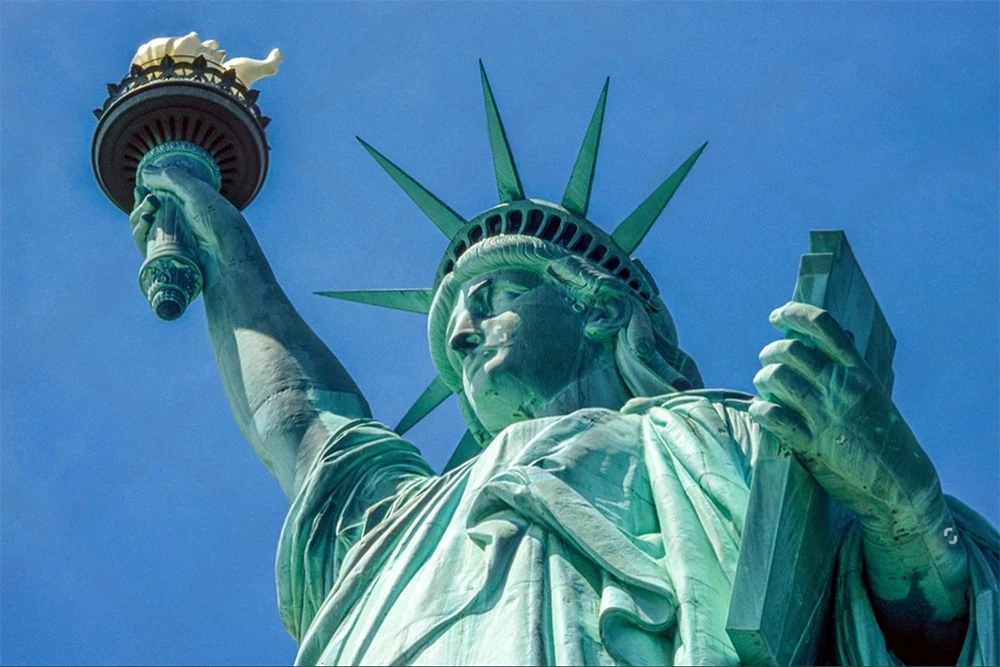
Two Liberties, waving across the Atlantic forever.
I remember spotting her from a sun warmed bridge, small and steadfast against the current. She was turned west, chin lifted, and the Seine slid past like green glass. A gull wheeled overhead, the breeze carried a hint of wet stone, and for a moment I felt that soft jolt you get when a familiar face appears where you don’t expect it.
In Paris, her smaller twin doesn’t feel like a replica so much as a reminder facing the ocean as if sending a steady hello to the original in New York Harbor, a postcard in copper that never gets lost. I love the tenderness of that idea: two icons quietly keeping each other company across the water, proof that distance can be bridged by shared ideals and the stubborn hope people carry from shore to shore.
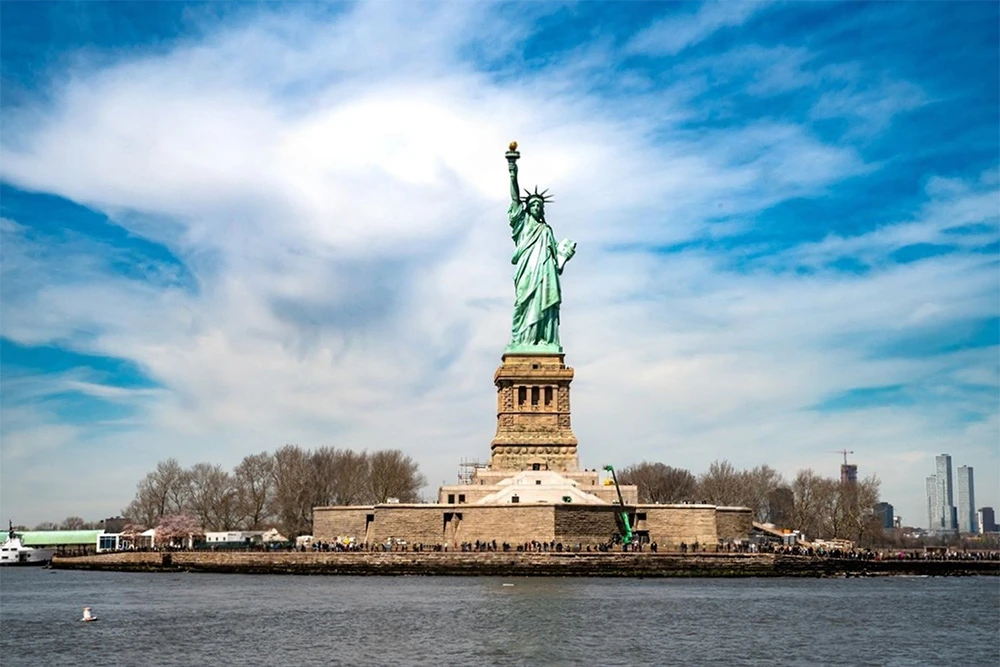
Liberty’s Patina Sweats, Mending Herself in Humid Air
On a sticky morning I learned a secret about her. When the air turns heavy, the copper doesn’t just sit there; it glistens. Out in New York Harbor, the breeze carried a salt sweet smell and a faint metallic whisper, and I remember thinking she looked like rain caught on skin.
That green patina actually sweats in humid weather, sending thin verdigris streaks down her sides that seep into hairline cracks and mend them. It’s her own quiet skincare routine, a slow kindness she gives herself. There’s something tender in that strength not as a hard shell, but the kind that breathes, endures, and keeps finding ways to heal. I walked away feeling oddly comforted, reminded that even wear and tear can become a balm.
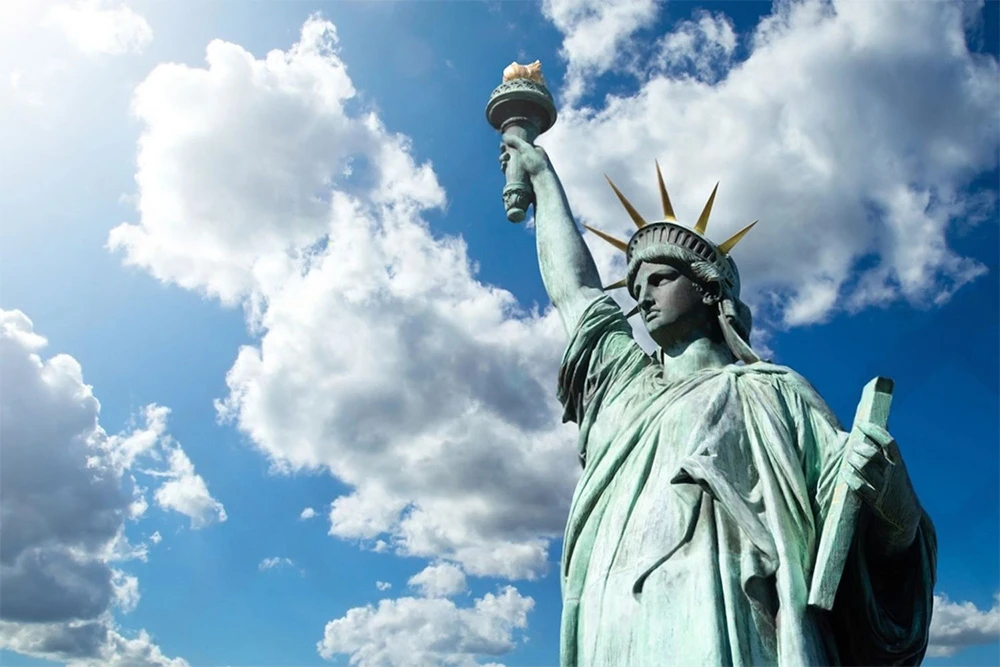
They almost gilded Lady Liberty to catch moonlight
I remember hearing that someone once proposed covering her entirely in gold so she’d throw moonlight back across the harbor like a beacon, and I actually paused, imagining that glittering version hovering over the dark water. Then the punchline: Congress said no. Standing there with the briny wind on my face and gulls whining overhead, it felt oddly comforting like finding out a dear friend refused to overdress for the party. Her quiet green seemed truer than any shine, the kind of light you trust because it doesn’t shout.
In New York, where everything hustles to be seen, I love that she stayed copper skinned, letting the moon lay a soft hand across her shoulders instead of turning her into a lighthouse in a sequined dress. There’s something tender in that restraint: an idea of welcome that glows just enough, a promise you sense rather than a glare you can’t ignore. It makes me think that sometimes the brightest gesture is the one you hold back, so the meaning can find its own way home.
Her secret sits at her feet, not the torch.
I know, everyone looks up at the torch first the sun catching on that tired green copper, gulls drifting in the wind, the quiet murmur of strangers tipping their chins skyward. But what stays with me lives under her robe: the broken chains beside her steps. It’s such a small detail, easy to miss, yet it shifts the whole feeling from proud to brave.
She also stands on an old star shaped fort, built for wars most of us couldn’t name now, out in New York Harbor. That layering surprised me hope resting on history’s rough stones, the present rising from the past without pretending it was clean or simple.
Together, the chains and the fort say the same thing to me: freedom isn’t flawless marble, it’s resilience. It gets scuffed, repaired, argued over, passed along more like a quilt of mended seams than a pristine sheet. And somehow that makes the promise feel more real, like an invitation to keep remaking it, not just admiring it.
Liberty’s First Season of Quiet, Unsettling Forgetting
It still surprises me that she began in silence. After the parades of 1886 faded, the docks emptied and, for nearly six months, Lady Liberty kept company with gulls and wind. I picture cold light on copper, the slap of tide against pilings, and a horizon that didn’t answer back. There’s something tender in that kind of quiet, the moment before memory arrives.
Bartholdi had dreamed of a festival ground gardens, statues, even a casino where people would gather to toast freedom. Instead, the paths went still, benches unclaimed, the island a grand bell waiting to be rung. The harbor felt more like a stage after the curtain fell than a party that refused to start.
Out on Liberty Island, I remember looking up and thinking how even symbols need time to be seen. Maybe that first lonely season stitched a patience into her welcome, made it broader, kinder. She stood there, steady, holding a light for a world that would come back when it was ready.
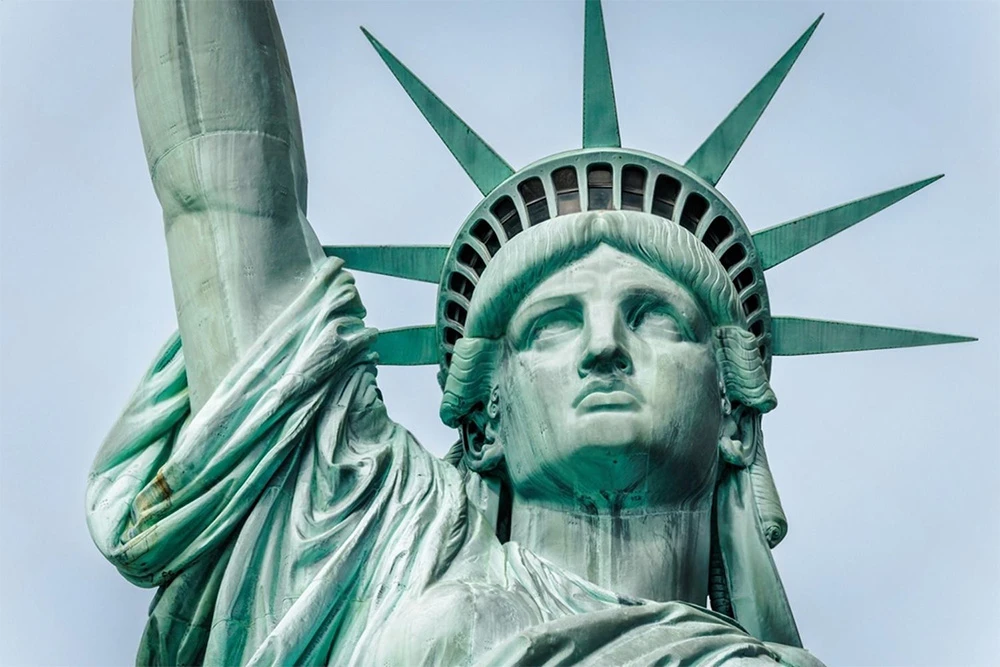
Final thought
Looking closely at the hidden stories, small details, and human moments, I find a truer side of Statue of liberty, one that feels less distant and more alive. Each overlooked edge and quiet memory makes the whole feel human, inviting a slower step and a steadier gaze. It is like a lantern cupped in the hand, steady and warm. I walk away resolved to keep looking with care, and to carry that feeling forward.

